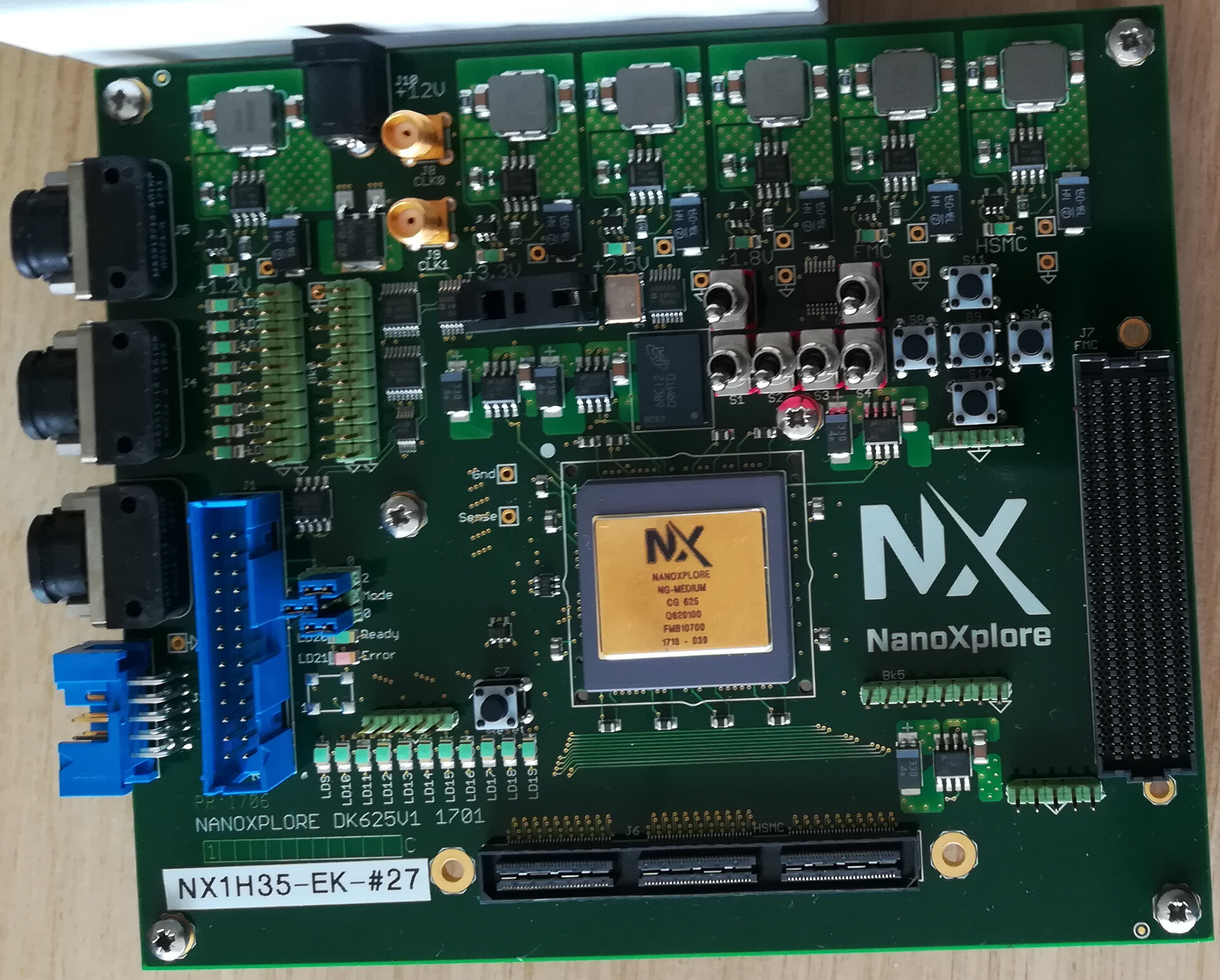Developing an open-source tool for a European space-grade computer chip
Space missions require high-performance, reliable and adaptable computing solutions that can operate in extreme conditions. An innovative project by YosysHQ and funded through ESA's Discovery element seeks to develop an open-source toolchain to work with a space-grade, radiation-hardened Field-Programmable Gate Array (FPGA) architecture.
Field-Programmable Gate Arrays (FPGAs) are a type of integrated circuits essential in modern space applications, providing a unique combination of flexibility, performance, and shorter development time. They can be reconfigured after launch, allowing the spacecraft to adapt to new mission requirements, correct errors and optimise performance in real-time.
Radiation-hardened and -tolerant FPGAs ensure reliability in extreme space conditions, where cosmic radiations and temperature fluctuations pose significant risks to traditional electronics. As space missions become more complex and data-driven, space-grade FPGAs play a vital role in ensuring efficiency, adaptability, and long-term mission success.
A team from YosysHQ added an open-source toolchain to accelerate the development of NanoXplore's NG-Ultra, a European space-grade FPGA solution supported by ESA and CNES. YosysHQ developed support for NanoXplore's NG-Ultra architecture within the open-source place-and-route tool nextpnr, as an alternative to the proprietary Impulse tool. The idea was submitted through ESA’s Open Discovery Ideas Channel (OSIP).
A community-oriented open-source toolchain
The novelty of the idea lies in adding the open-source tool, which brings significant advantages over using just the proprietary solution. It offers increased reliability for developers, as they are able to validate and compare designs using two independent tools. Additionally, the open-source nature of nextpnr enables users to customise and optimise the tool for specific use cases. Having an open-source tool available to the community allows for shared improvements, bug fixes, and the development of specific features that may be not present in vendor tools.
"The NG-Ultra is the largest device implemented in nextpnr, allowing us to push the tool's limits at scale. Unlike previous open-source place-and-route tools that relied on imagined architectures or reverse engineering, this work is unique because the vendor provided architecture details. However, since vendor-specific place-and-route implementations were not included, we had to develop independent solutions to address architectural limitations, making this a significant step forward in open-source FPGA tooling", says Matt Venn, Chief Sales Officer at YosysHQ.
Looking ahead
The research showed that nextpnr is capable of supporting large FPGAs and overcoming architectural limitations. The team focused on the basic design elements at first and conducted extensive testing to ensure that the open-source tool is reliable and performs well with NG-Ultra devices. In the future, the model can be applied for more complex design elements.
This is a significant step forward in building a flexible, open-source FPGA development toolchain for NG-Ultra. The adaptability and collaborative nature of nextpnr foster innovation and improvements, both within the developer community and through ongoing partnerships with academia. It is also a major achievement in open-source FPGA development in general, as it is by far the largest FPGA supported by open-source tooling.
"This activity explored cutting-edge algorithms for the place-and-route step, expanding the open-source toolchain to large-scale FPGAs", says Filomena Decuzzi, ESA Technical Officer for the project. "The project allowed the European space-grade FPGA ecosystem to open up to the open-source community, enabling participation and improvements in the ecosystem."
"ESA Discovery & Preparation funding via OSIP has helped us gain a deeper understanding of nextpnr's capabilities and limitations while demonstrating that open-source toolchains for large FPGAs are feasible. This work has highlighted critical areas for improvement and potential paths forward, including expanding support for NG-Ultra's unique features. Importantly, it has also shown that opening architecture data benefits not only developers but also the vendor, fostering broader research and innovation in FPGA design and optimisation," says Matt.















 Germany
Germany
 Austria
Austria
 Belgium
Belgium
 Denmark
Denmark
 Spain
Spain
 Estonia
Estonia
 Finland
Finland
 France
France
 Greece
Greece
 Hungary
Hungary
 Ireland
Ireland
 Italy
Italy
 Luxembourg
Luxembourg
 Norway
Norway
 The Netherlands
The Netherlands
 Poland
Poland
 Portugal
Portugal
 Czechia
Czechia
 Romania
Romania
 United Kingdom
United Kingdom
 Slovenia
Slovenia
 Sweden
Sweden
 Switzerland
Switzerland



























